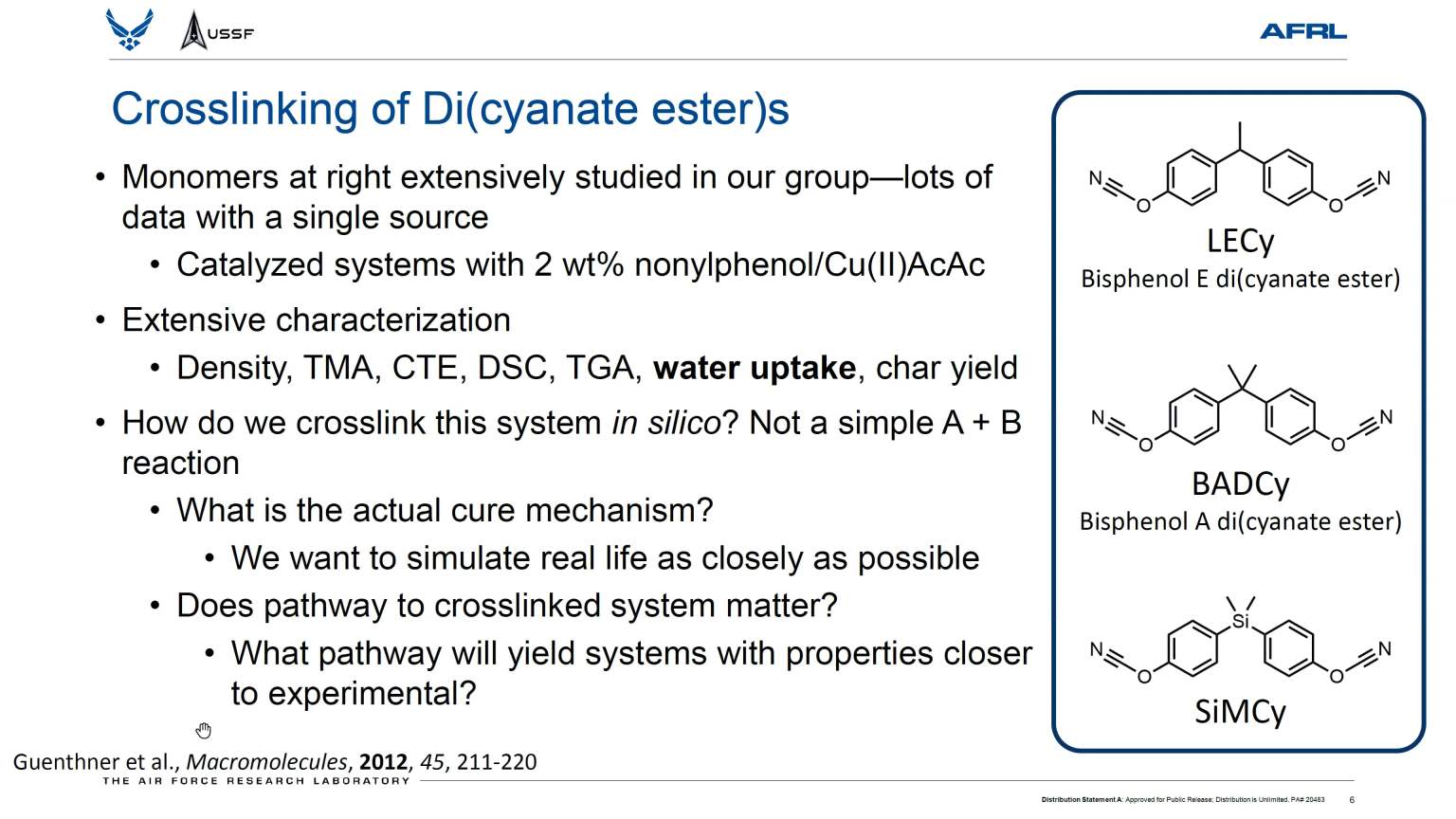OCT 27, 2020
Molecular modeling of polycyanurates to predict thermophysical properties
Speaker:
Dr. Levi Moore
US Air Force, Air Force Research Laboratory Aerospace Systems Directorate, Edwards AFB
Abstract:
Polycyanurates have enjoyed use in high-performance applications in aerospace as the resin component for high-temperature composites. Their high glass transition temperature and low water uptake are two of their most adventitious properties. However, little is known about how water resides in the systems, and despite their low water uptake, failure can occur if a part that has absorbed water experiences a rapid rise in temperature. Modelling and simulation can give insight into the molecular details of water uptake, leading to improved formulations or chemistries that reduce the water uptake of the system, but only if the model realistically represents the experimental system. Two crosslinking mechanisms for realistic construction of a simulated model were evaluated, and the better mechanism was used to prepare systems using varied polycyanurate chemistries. Simulated thermophysical properties like density and coefficient of thermal expansion compared well with literature, while the Tg and water uptake simulations were consistent with literature after correction. Radial distribution function (RDF) analysis showed the absorbed water molecules tended to aggregate in places where there was ample free volume, like around the phenol catalyst, unreacted chain ends, and the triazine crosslink, rather than the bridgehead, where the water molecules were hypothesized to aggregate.
